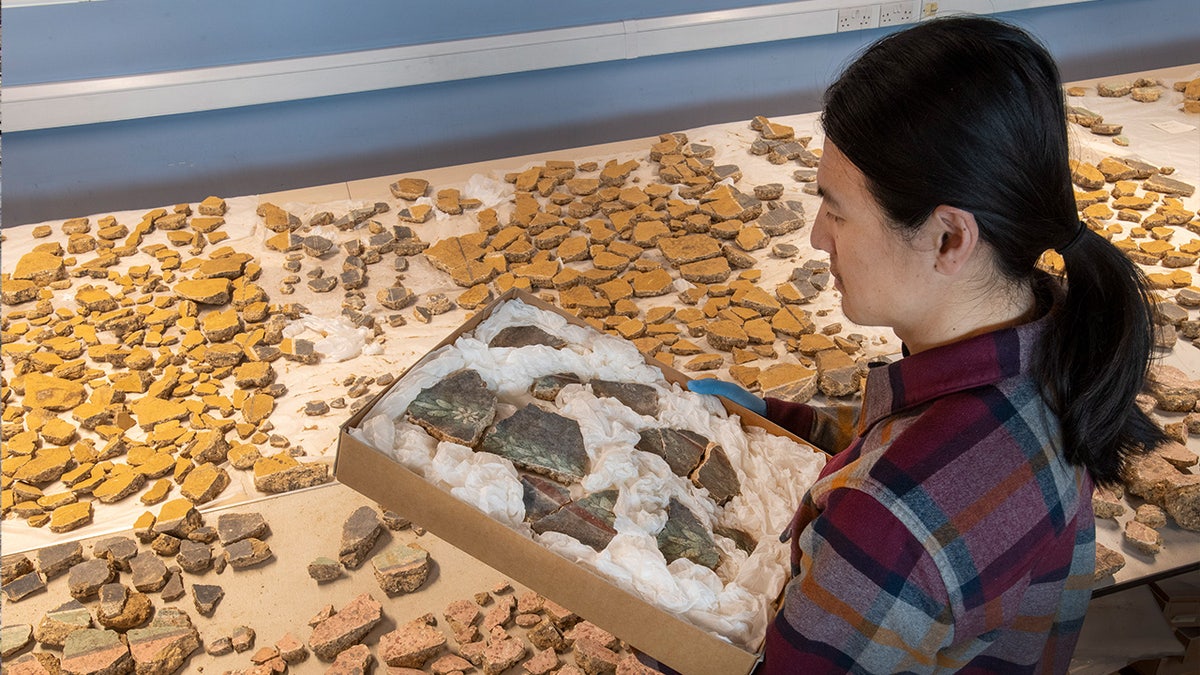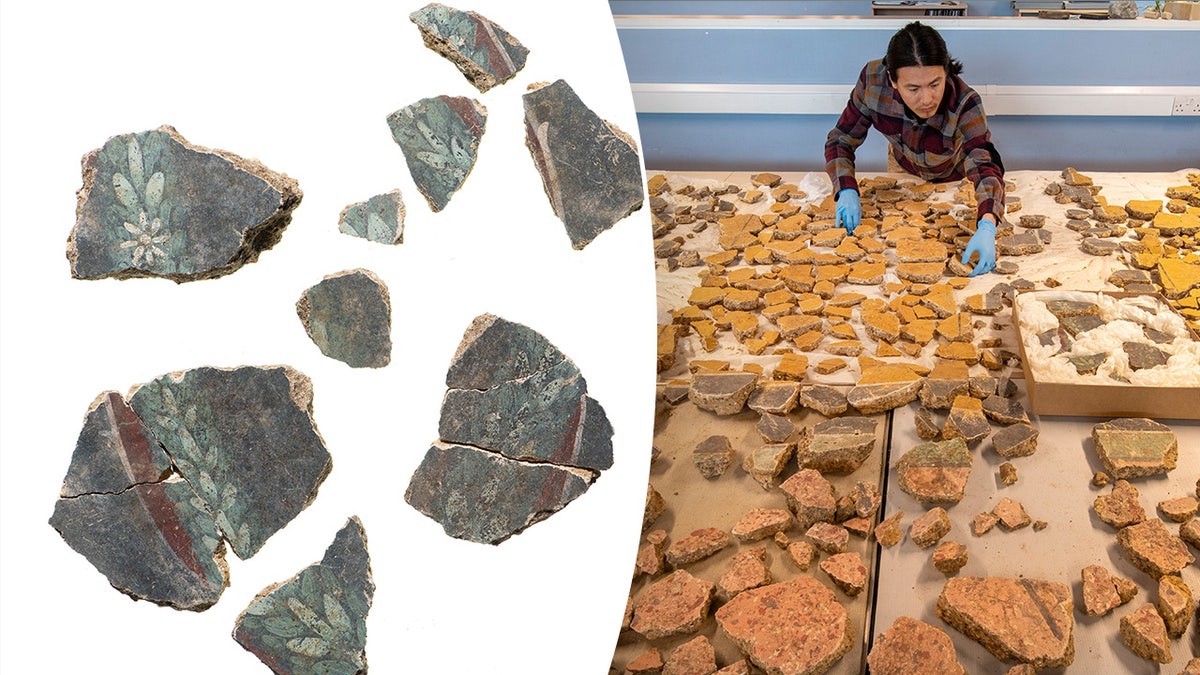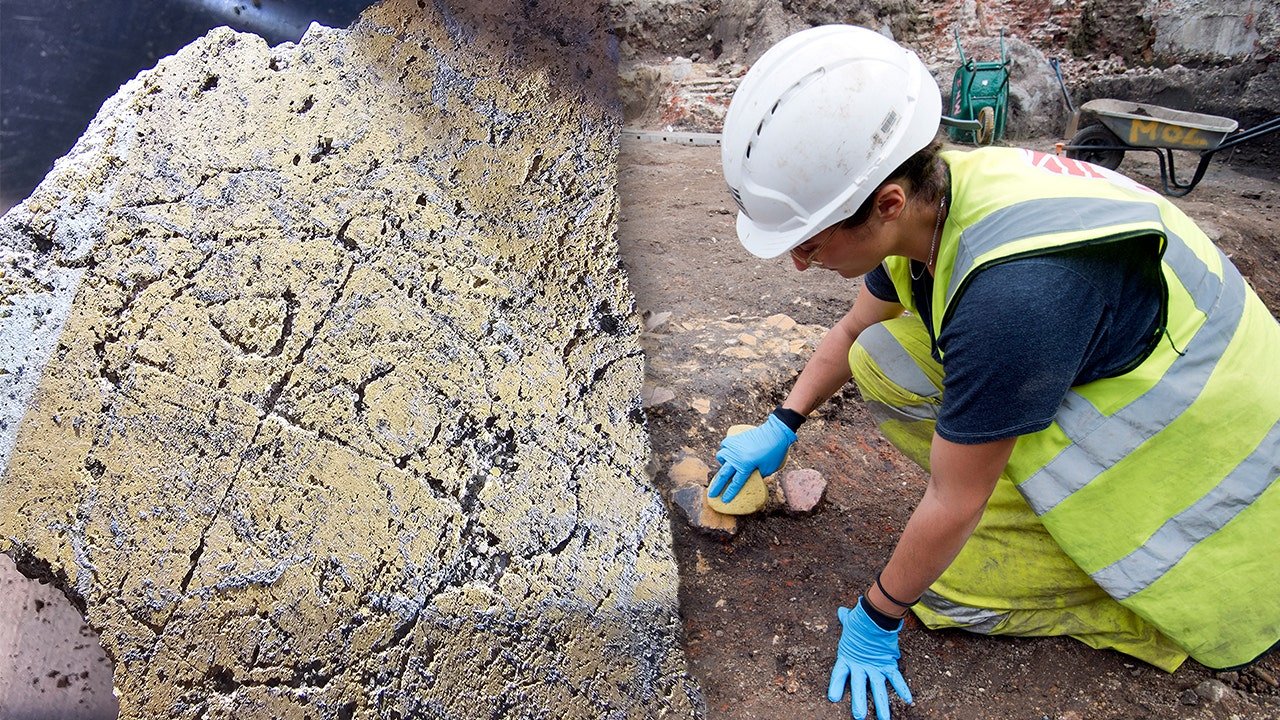NEWYou can now listen to Fox News articles!
Researchers in London recently announced that a giant “archaeological puzzle” has been solved, revealing artwork that’s been hidden for 1,800 years.
The Museum of London Archaeology (MOLA) announced in a June 17 press release that one of its experts successfully reconstructed a collection of Roman wall plaster. (See the video at the top of this article.)
The collection of painted ancient plaster is the largest ever discovered in London – and it took an enormous amount of work.
SINKHOLE IN HISTORIC CITY REVEALS MEDIEVAL HOSPITAL HIDING JUST BENEATH STREET LEVEL
“The decorated plaster was found dumped in a large pit, shattered into thousands of fragments,” the museum’s statement noted.
“It took three months for MOLA Senior Building Material Specialist Han Li to lay out all the fragments and painstakingly piece the designs back together.”
Recent work by archaeologists in London yielded fascinating discoveries, including the carving of a Roman woman crying (seen at left). (MOLA (Museum of London Archaeology))
The mosaic once decorated a high-status Roman building in the Central London district of Southwark, officials said.
The building “was demolished some time before AD 200,” MOLA’s statement read.
“These beautiful frescoes once decorated around 20 internal walls of an early Roman (AD 43-150) building,” the museum noted.
“These vibrant artworks can be reconstructed to reveal their full glory.”
“Now, for the first time in over 1800 years, these vibrant artworks can be reconstructed to reveal their full glory.”
ANCIENT ROMAN COIN TREASURE FINALLY REVEALED TO PUBLIC AFTER BEING HIDDEN FOR CENTURIES
Officials said the fresco was designed to show off the property owner’s wealth, as well as its good taste.
They noted the fresco includes “yellow panel designs with black intervals beautifully decorated with images of birds, fruit, flowers and lyres.”

Han Li, shown here, said he felt “a mix of excitement and nervousness” when he embarked on the reconstruction project. (MOLA (Museum of London Archaeology))
“Finding repeating yellow panels like these is [rare] … While panel designs were common during the Roman period, yellow panels weren’t,” the museum said.
“They have been identified at only a few sites across the country.”
“Tragically, the fragment is broken where the painter’s name would have appeared.”
“I felt a mix of excitement and nervousness when I started to lay the plaster out,” the expert recalled.
“Many of the fragments were very delicate and pieces from different walls had been jumbled together when the building was demolished, so it was like assembling the world’s most difficult jigsaw puzzle.“
Li also remarked that “[not] even individuals of the late Roman period in London” would have seen the art, making the discovery particularly special.

Han Li, shown above right, observed that “[not] even individuals of the late Roman period in London” would have seen the art, which was demolished in around 200 A.D. (MOLA (Museum of London Archaeology))
The discovery of the Roman fresco in London offers a vivid glimpse into the era when Romans ruled Britain, from 43 A.D. to 410 A.D.
They maintained their presence in Britain for nearly four centuries before beginning their withdrawal in 410 A.D – and many remnants of their power and influence are being found today.
CLICK HERE TO GET THE FOX NEWS APP
In May, British archaeologists announced the discovery of an unusual eight-sided ring in a former drainage ditch.
This winter, a Roman grave filled with gypsum was found during a highway construction project in England.
#London #researchers #reconstruct #rare #Roman #fresco #hidden #years



